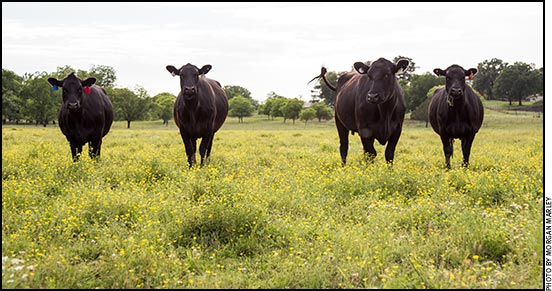
cutline.
A Place to Start Pasture Renovation
Pasture weed control provides better forage availability and profitability.
Weed management should be the beginning point of renovating a pasture — even before fertilizing or replanting species, according to Scott Flynn, a field scientist with Dow AgroSciences. “If you don’t deal with the weeds, they’ll take up fertilizer and real estate,” explains Flynn.
When you are ready to manage weeds, “You shouldn’t mow to control,” adds Flynn. “Mowing is like kicking the can down the road,” he says of the lack of weed control it produces. He notes that mowing creates a windrow that suppresses other forage growth, and it can expose bare ground, which is an invitation for weed seeds to establish. Moreover, he reports that it can cost $15-$25 per acre to mow, which is equivalent to one herbicide application.
Of the importance of investing in pasture weed control, Flynn observes, “Producers get really tied up in genetics and animal health — and those things are important, but the grass under your feet represents the biggest opportunity.”
Pat Burch, also a field scientist with Dow AgroSciences, adds, “You don’t need to buy new land, you just need to make what you have better.”
Burch advises that to manage weeds, landowners should monitor their pastures, then match the herbicide treatment — broadcast, basal or foliar — to the type of weed infestation. (Find more details at www.dowagro.com/en-us/
range/applicationmethods.)
As one tip, this duo suggests 2,-4 D is best used for spot treatments on weeds.
“2,-4 D is not a big enough hammer to renovate a field,” Burch stated. “It also doesn’t have a soil residual like Chaparral™ to decrease next year’s weeds. So we typically don’t suggest using 2,-4 D as a standalone.”
When asked what herbicide works best for weed control when clovers are present, Burch and Flynn noted that is a difficult scenario. If broadleaf weeds need to be controlled by herbicides, more than likely the clover will be killed, as well.
“If you get to 20% to 30% weed population in the pasture, you’ve likely diminished the clover value,” Burch advised. “You may need to take out the weeds [i.e., apply herbicide] and plant back the clovers that are also lost to spraying.”
That said, the duo expressed excitement for research on a new Dow product in development for controlling a wide range of broadleaf weeds without killing white clover. Currently referred to as GF 3731, the new herbicide will be composed of a new active ingredient that is selective for white clover.
Trials have shown white clover may temporarily show signs of injury, primarily lodging, and some varieties of white clover are more tolerant to the chemical than others. The product is not currently registered, but could be on the market in a few years.

Editor’s Note: Kindra Gordon is a cattlewoman and freelance writer from Whitewood, S.D. This article was written as part of Angus Media’s coverage of the 2018 Cattle Industry Convention & NCBA Trade Show.






